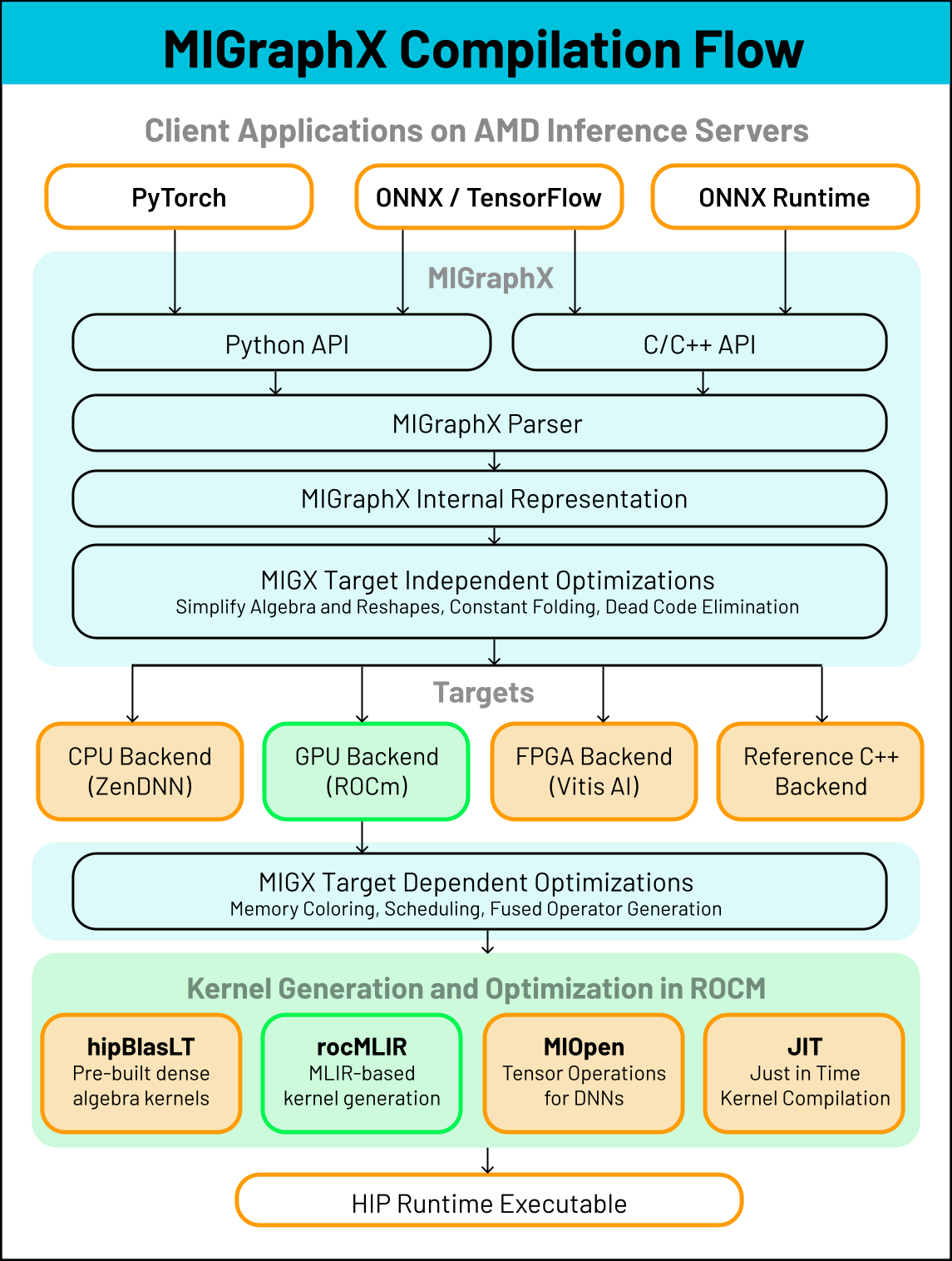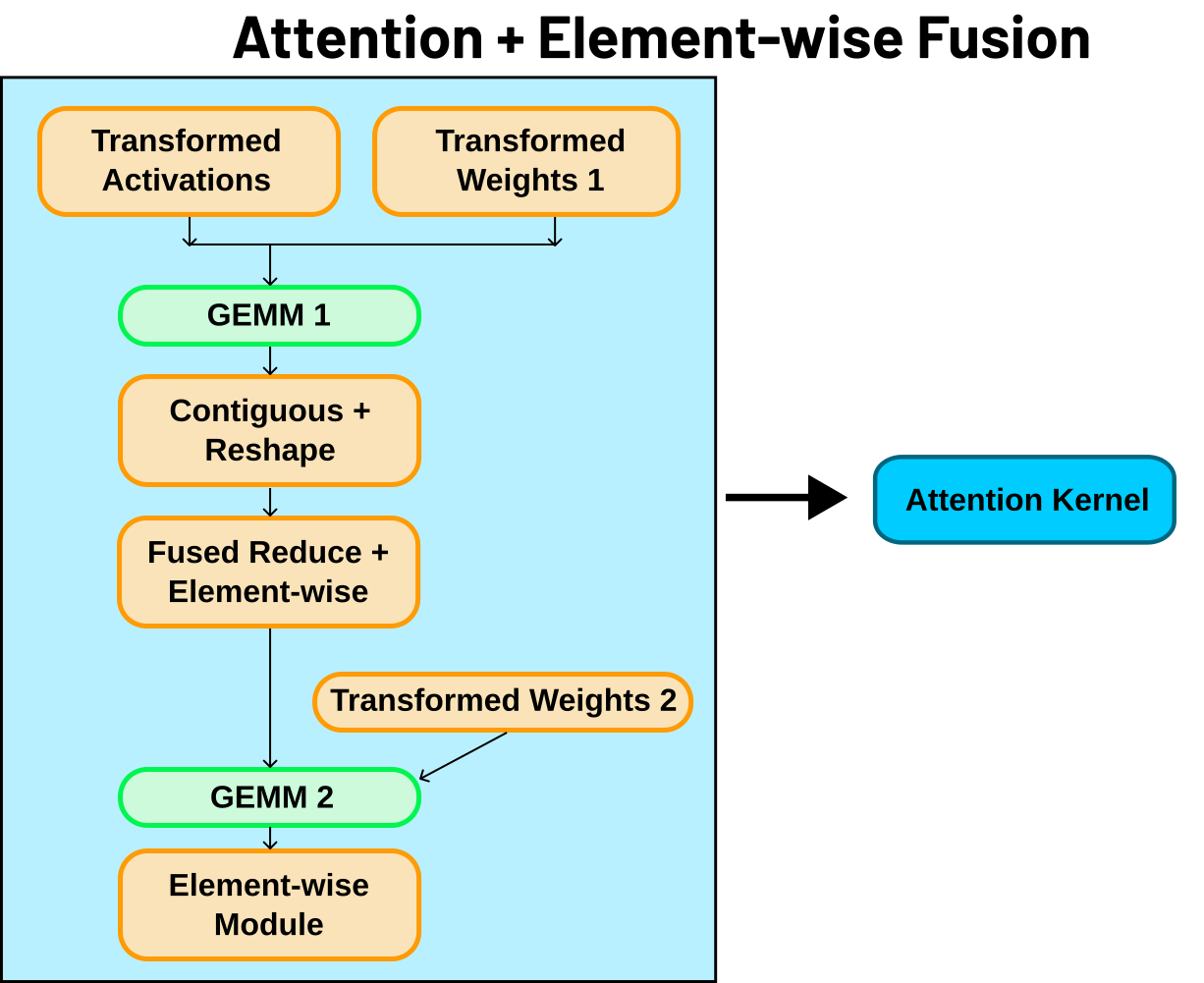Deep learning compilation with MIGraphX#
2025-10-30
2 min read time
The MIGraphX deep learning (DL) compiler improves inference by analyzing a model’s compute graph and applying program transformations. After optimization, the compiler lowers graph operations to device kernels (from libraries or via code generation) for efficient execution.
A common transformation is kernel fusion; where compatible operations are merged into a single kernel launch. Fusion reduces launch overhead and avoids extra reads or writes between host and device, which typically improves latency and throughput. By applying graph-level optimizations and choosing or generating efficient device kernels, MIGraphX delivers high-performance over uncompiled models and less optimized compiled solutions.
An overview of the compilation process for MIGraphX is shown below in
compilation-label. One type of optimization that MIGraphX
performs are kernel fusions such as the Attention fusion seen in
attention-label.


What MIGraphX provides#
End-to-end: compilation and execution of DL models on AMD GPUs
C++ implementation: with Python and C++ APIs
- Model inputs:
ONNX and TensorFlow
PyTorch through ROCm/torch_migraphx
ONNX Runtime execution provider
Hardware targets: AMD Navi (consumer) and MI (server) GPUs
Supported data types: FP16, BF16, OCP FP8, INT8, INT4